
Self-driving cars are seen by some as the saviour of motorised personal transport. They have the potential to be greener, safer and more efficient than conventional vehicles. However well some motorists are able to control their vehicles, fatigue, drink driving, speeding and distraction are just some of the reasons why roads remain a danger. Automated technology already carries out many arduous daily tasks. Driving will soon be no different, according to those at the forefront of driverless car technology.
What appears to the human eye as a chaotic urban street is, to a computer, a series of predictable events. In 50 years, people may wince at the thought that pedestrians and cyclists in towns and cities played second fiddle to speeding traffic at the hands of humans rather than computers.
The cutting-edge technology may not, however, be up to overcoming all our human frailties. Motion sickness is expected to be more common in self-driving vehicles than in conventional vehicles.
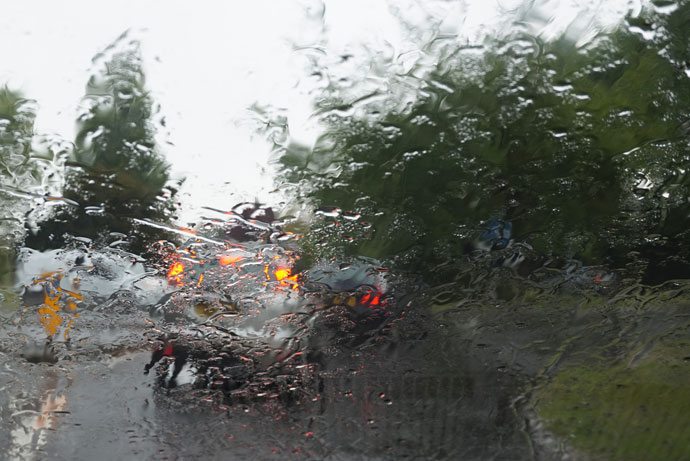
The reason is that the three main factors contributing to motion sickness (conflict between vestibular and visual inputs, inability to anticipate the direction of motion, and lack of control over the direction of motion) are elevated in self-driving vehicles.
Driverless cars offer the possibility of new seating configurations and the chance to spend time surfing the internet or watching films on large screens – all activities that have an effect on motion sickness.
A report by The University of Michigan Transportation Research Institute has calculated the expected frequency and severity of motion sickness in fully self-driving vehicles based on the expected in-car activities.
The results indicate that up to one-in-ten American adults riding in fully self-driving vehicles would be expected to often, usually, or always experience some level of motion sickness.
Just as interesting are the results of international polling conducted by the researchers. When posed question “If you were to ride in a completely self-driving vehicle, what do you think you would use the extra time doing instead of driving?”, 23 per cent of American and British respondents said they would not ride in a self-driving vehicle. In China, the figure was only 3 per cent.
The road ahead for driverless cars
Autonomous vehicles promise safer and more efficient roads, but If there is a seeming inevitability about driverless technology, far less clear is how it will change the relationship we have with our cars. Will the current concept of private car ownership give way to networked public service vehicles that can be hailed like a cab, or will autonomous cars become private luxury retreats on wheels?
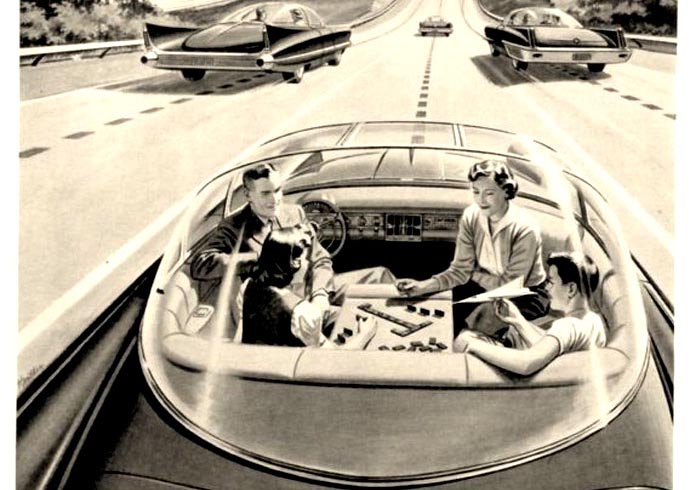
Driverless car technology has been imagined for decades, but explosive urban population growth is hastening its development
By 2050, the UN expects the global urban population to be 6.3 billion – the same size as the world’s total population was in 2004. Quite apart from the demand on natural resources, there is unlikely to be the road space to cope with this explosive level of growth. The automotive industry recognises that driverless technology represents the key to the survival of the car in the crowded mega cities of the future. Unless road user charging prices a significant proportion of us off the roads over the next two decades, there will not be room for anything other than driverless cars.
Early incarnations of the technology are beginning to creep into production cars. Volvo has developed its Collision Warning with Full Auto Brake to recognise and react to pedestrians and cyclists in the urban environment, and even the ubiquitous Ford Focus is able to park itself automatically.
At the cutting edge, the Google car has driven hundreds of thousands of miles without any driver input. BMW has demonstrated a version of its i3 electric car that can be left at the entrance to a shopping mall and sent off to find a parking space on its own. When its driver is paying at the tills, the car can be summoned by smartphone app so that it is waiting outside ready to go.
Breakdown cover for your car of today
Driverless cars as future public transport
If driverless vehicles can be summoned in this way, private ownership could become superfluous. Proponents of ENVs (electric networked vehicles) believe that small, automated, low-speed pods summoned by smart phone or watch would not be privately owned. This vision promises to combine the convenience of private car ownership with the efficiency of public transport.
From automotive to autonomous
The latest incarnation of the Google looks every inch the city car of the near future. It has friendly-looking styling that we can all recognise. Google has purposefully retained an appearance we all recognise to make the radical technology more acceptable. However, driverless vehicles allow for a complete departure from what we consider a car to be.
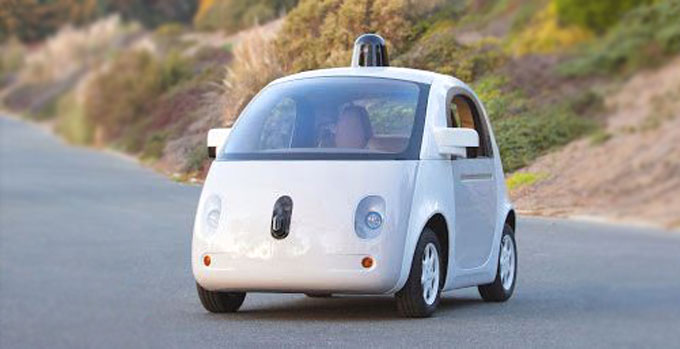
The Google driverless car has been styled to look unthreatening
In 2009, a design company called Mike and Maaike, which had previously worked on the Google phone, unveiled its vision of personal transport in 2040. The fully-autonomous electric concept car is unencumbered by a large engine; batteries underneath the seating and floor are boosted by solar panels on the roof and hub-mounted motors. Codenamed ‘atnmbl’, the design is smaller than the average saloon and yet features a wrap-around seven-seat sofa, table and television.
The challenge for the car industry is that automated plastic pods are a hard sell. It spends many millions every year to convince us that our cars are not metal boxes to get us from A to B, that are in fact a lifestyle choice.
Marketing teams that currently sell cars on the promise of freedom and speed may struggle with automated cars that ‘swarm’ and cannot be exceed speed limits, but are likely to rely on appeal of luxurious and high-tech interiors.
The concept of the luxurious mobile living room is explored by Mercedes with its autonomous F 015 concept, which the luxury car maker claims demonstrates how the automobile is changing from a means of transportation to a ‘private retreating space’.
“The single most important luxury goods of the 21st century are private space and time,” says Dr Dieter Zetsche, Chairman of Daimler AG and Head of Mercedes-Benz Cars. “Autonomously driving cars by Mercedes-Benz shall offer exactly that. With the F 015 Luxury in Motion, this revolutionary concept of mobility becomes tangible for the first time.”
The design features four rotating lounge chairs that allow a face-to-face configuration. All four passengers can use their time aboard to work, relax or communicate. six screens incorporated into the interior promise a digital arena with which passengers can interact through gestures, eye-tracking or touching the high-resolution.
If we assume no wholesale switch to bicycles or buses over the next two decades, and a continuing appetite for personal motorised transport, then driverless vehicles seem inevitable.
Automotive industry experts, safety campaigners and city planners who look at the projected population growth in urban areas accept that driverless technology has the potential to improve our cities. Whether the technology is capable of weaning us off our love of the privately-owned car remains to be seen.
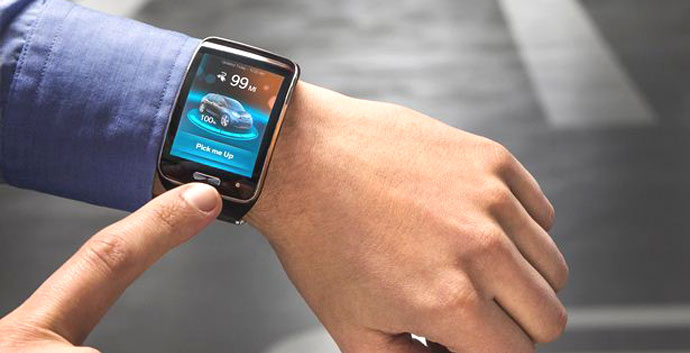
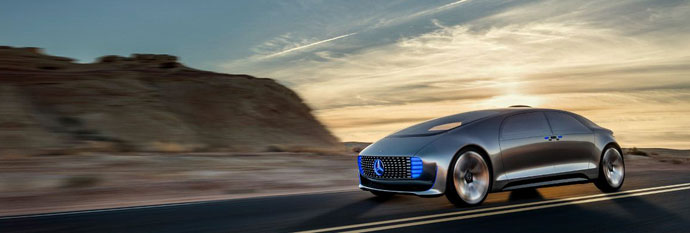
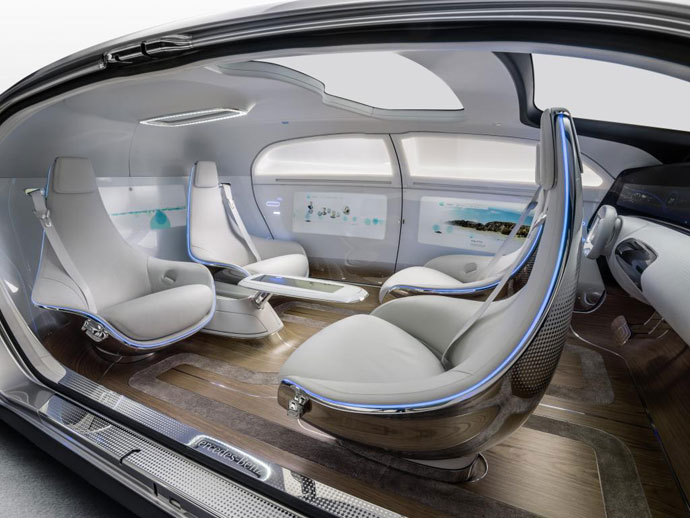
0 Comments View now